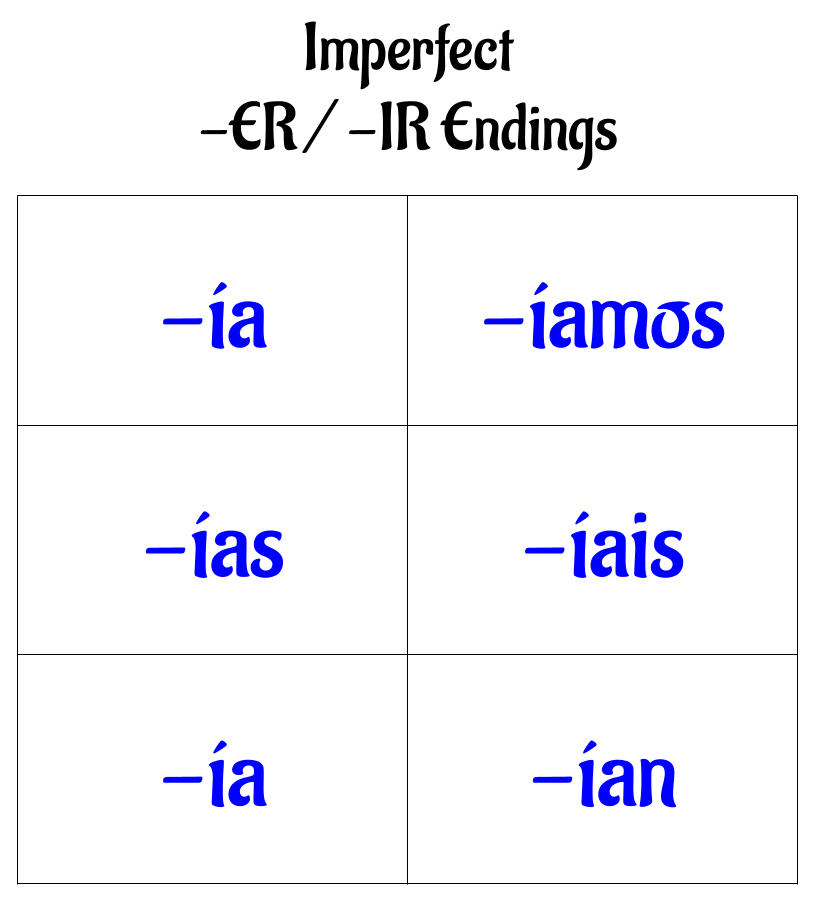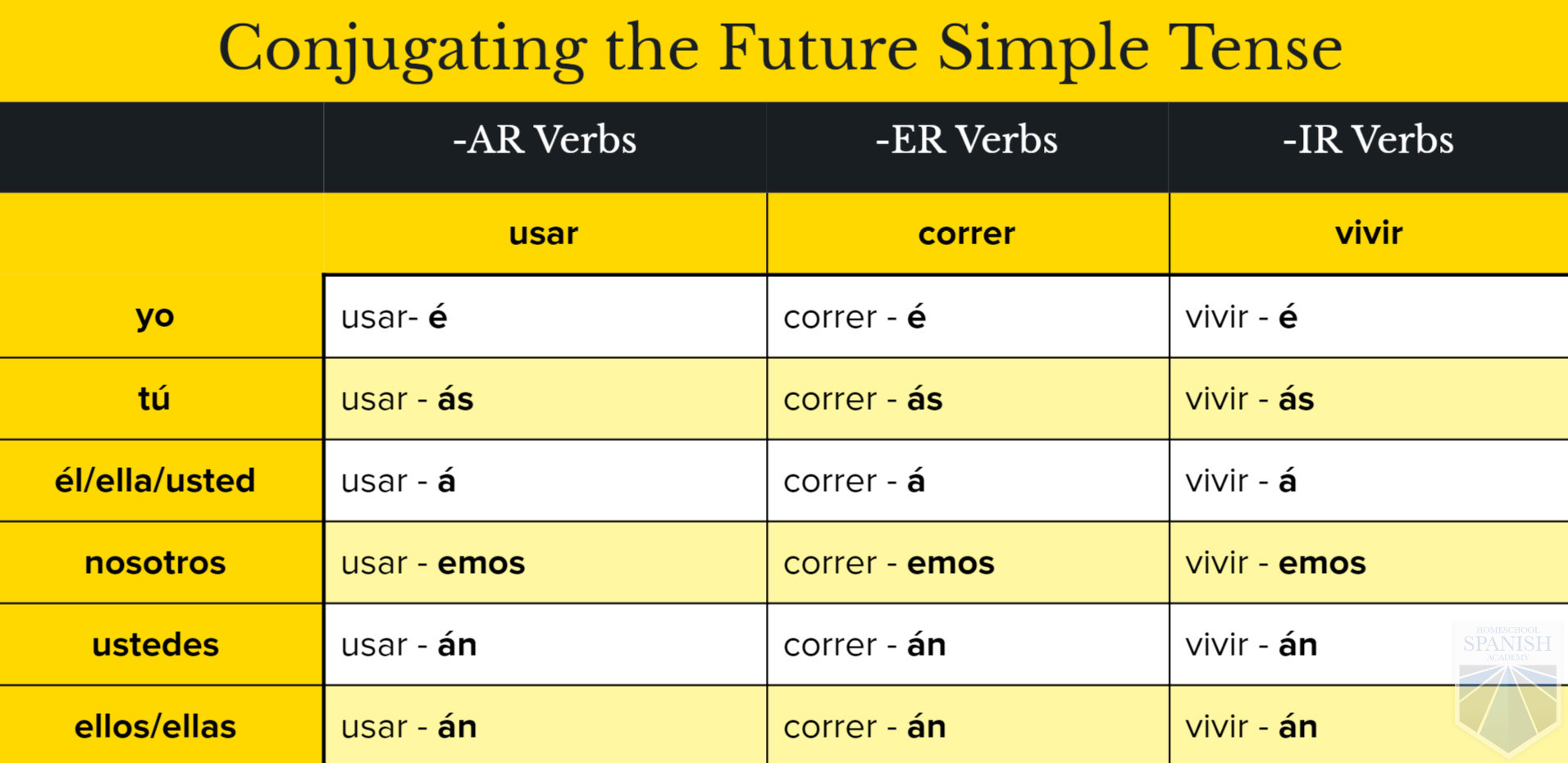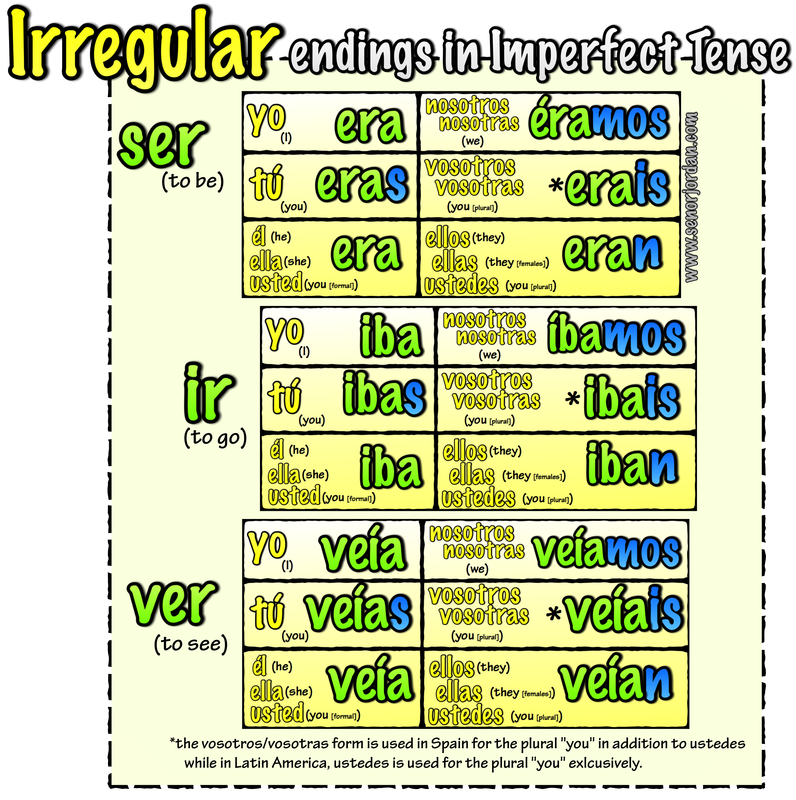

The – er verbs use the exact same endings in the imperfect tense as the – ir verbs, so look at perder as another good example and notice in Table 5 that perder does not stem change in the imperfect tense.Ī regular verb like vivir (to live) conjugated in Table 6 serves as a good example of an – ir verb in the imperfect tense. Notice that all imperfect tense forms of – er and – ir verbs have a written accent mark on the letter i. For every other – er and – ir verb, use the endings in Table 4. There are only three irregular verbs in the imperfect tense: ser, ir, and ver. The endings in Table 4 are the regular endings for both – er and – ir verbs. Read Table 3 outloud because it's fun to say the imperfect tense forms of the verb trabajar. The verb trabajar (to work) looks really strange in the imperfect tense, but it also is a good example that all forms of all – ar verbs are regular in the imperfect tense. As you can see in Table 2, the verb pensar is completely regular in the imperfect tense.

Also notice that only the nosotros/nosotras form has a written accent mark.Ī stem‐changing verb like pensar (to think) will not have any stem change in the imperfect. Notice that the yo form is exactly like the él, ella, and usted forms, so it is important to use the pronoun or noun to specify what the subject is in a specific sentence. There is not a single – ar verb that is irregular in the imperfect tense.
Imperfect spanish endings ir full#
The full verb of to eat is comer in Spanish. We will take this verb and conjugate it in the yo form using the three-step method. The – ar endings found in Table 1 are used for every – ar verb in the entire language. In order to conjugate verbs that end with -er in the imperfect tense one must: In the conjugation table above you can see the verb comer which means to to eat in English. There are no spelling changes and no stem changes in the imperfect. Usually, the imperfect tense is translated as “was / were doing” something, or “used to do” something.
Imperfect spanish endings ir how to#
While it is easy to learn how to create the forms of verbs in the imperfect tense, it is more difficult to understand when to use this tense. Only three verbs in the entire language are irregular in the imperfect tense. The imperfect tense is another past tense aspect in Spanish. Quiz: Command Forms with Reflexive Pronouns.Reflexive, Prepositional, and Demonstrative Pronouns.Verbs That Change Meaning in the Preterite.Quiz: Verbs That Change Meaning in the Preterite.Quiz: Irregulars in the Preterite Tense.In Table, notice that ver has the regular endings for an er verb. Note that the forms of the verbs ir (Table ) and ser (Table ) show the complete imperfect conjugation, not just an ending. Quiz: Stem Changers in the Preterite Tense The verbs ir (to go), ver (to see), and ser (to be) are completely irregular in the imperfect tense.Quiz: Different Yo Forms in the Preterite Tense.Different Yo Forms in the Preterite Tense.Quiz: Regular Verbs in the Preterite Tense.Quiz Indirect Objects and Indirect Object Pronouns.Indirect Objects and Indirect Object Pronouns.



 0 kommentar(er)
0 kommentar(er)
